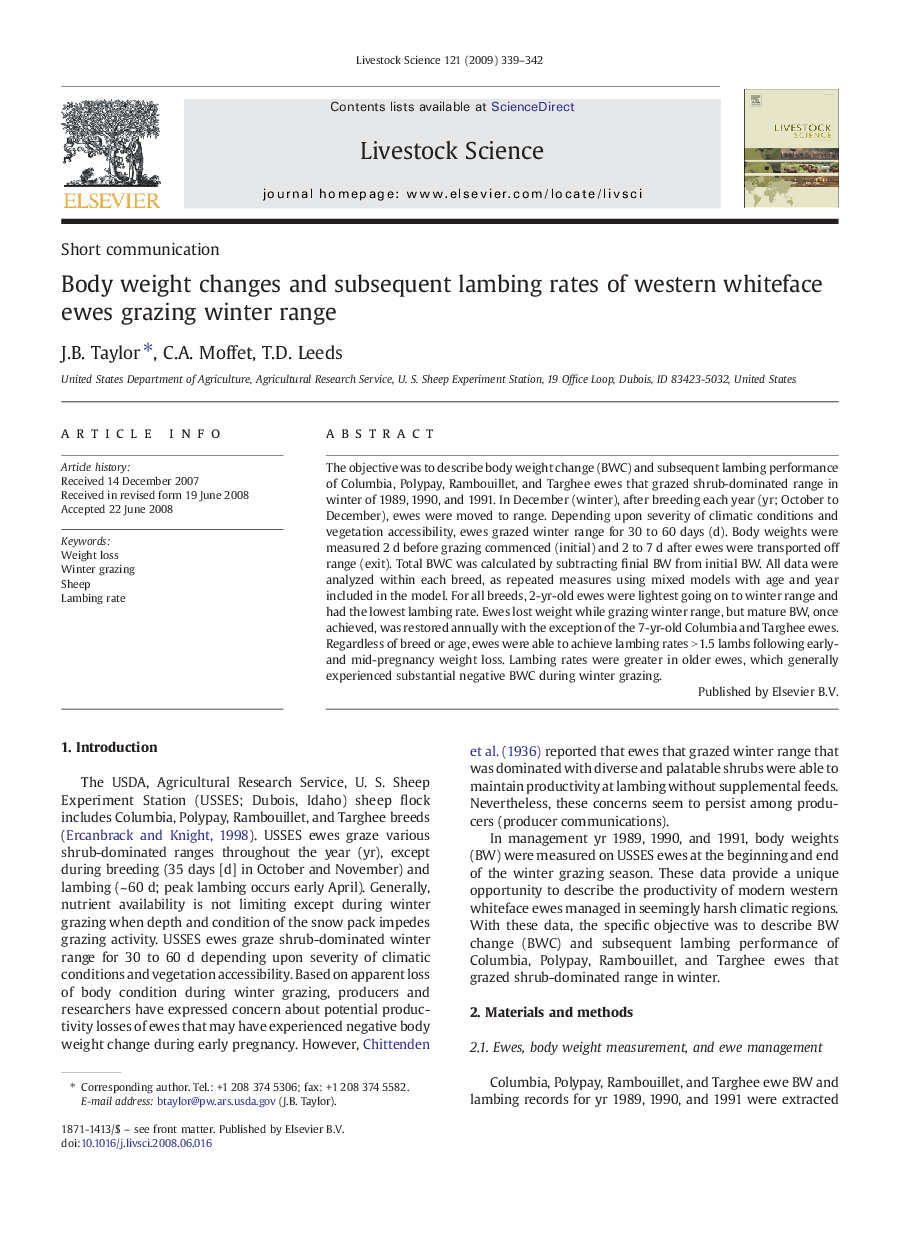| Article ID | Journal | Published Year | Pages | File Type |
|---|---|---|---|---|
| 2448282 | Livestock Science | 2009 | 4 Pages |
The objective was to describe body weight change (BWC) and subsequent lambing performance of Columbia, Polypay, Rambouillet, and Targhee ewes that grazed shrub-dominated range in winter of 1989, 1990, and 1991. In December (winter), after breeding each year (yr; October to December), ewes were moved to range. Depending upon severity of climatic conditions and vegetation accessibility, ewes grazed winter range for 30 to 60 days (d). Body weights were measured 2 d before grazing commenced (initial) and 2 to 7 d after ewes were transported off range (exit). Total BWC was calculated by subtracting finial BW from initial BW. All data were analyzed within each breed, as repeated measures using mixed models with age and year included in the model. For all breeds, 2-yr-old ewes were lightest going on to winter range and had the lowest lambing rate. Ewes lost weight while grazing winter range, but mature BW, once achieved, was restored annually with the exception of the 7-yr-old Columbia and Targhee ewes. Regardless of breed or age, ewes were able to achieve lambing rates > 1.5 lambs following early- and mid-pregnancy weight loss. Lambing rates were greater in older ewes, which generally experienced substantial negative BWC during winter grazing.
